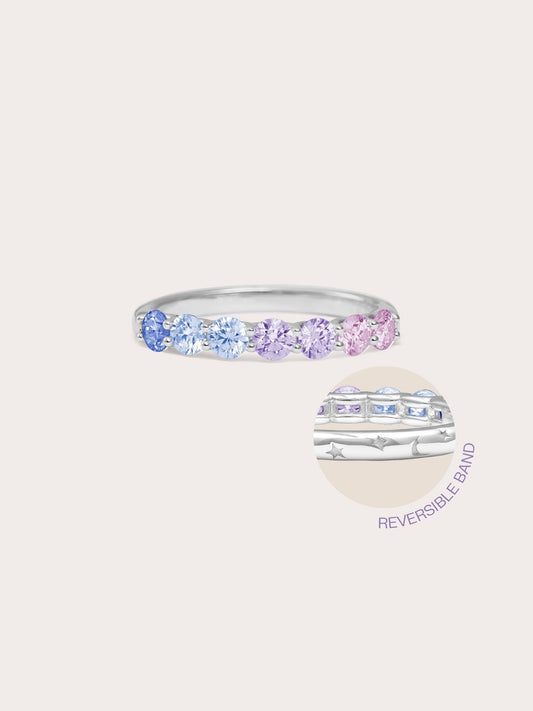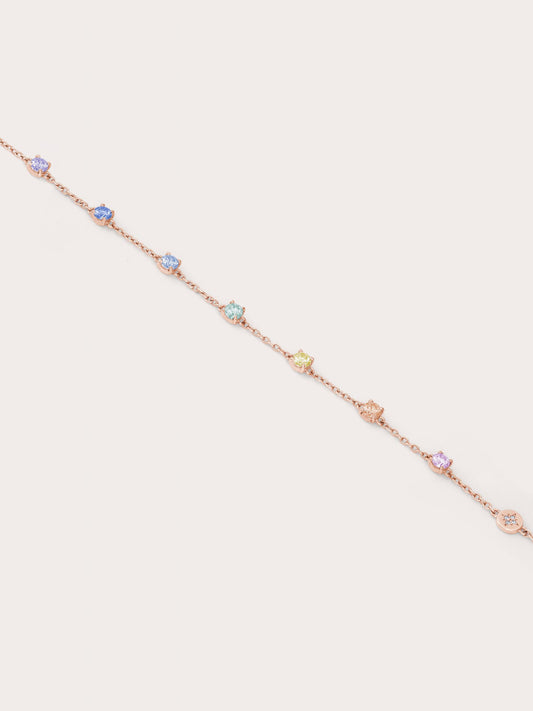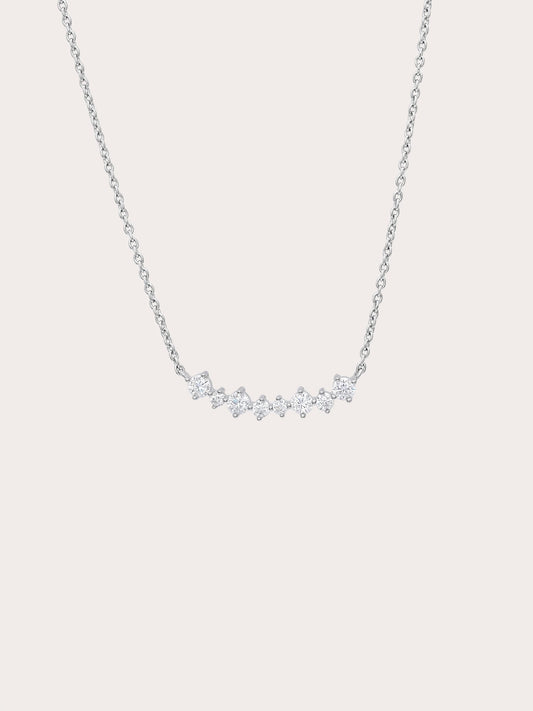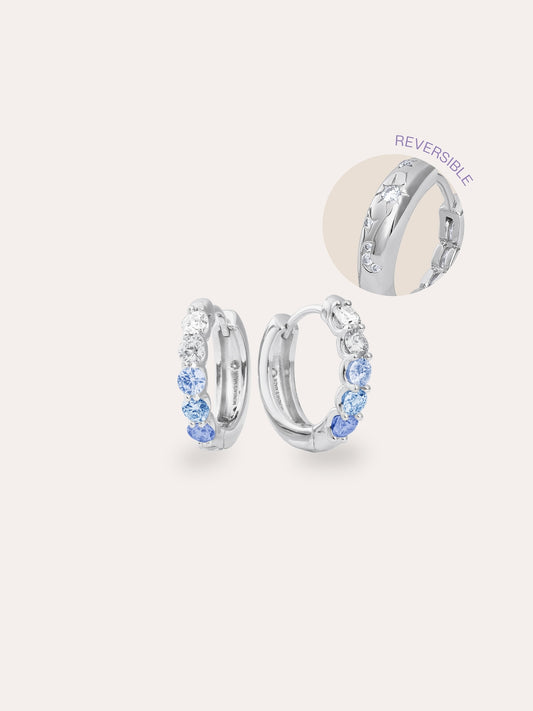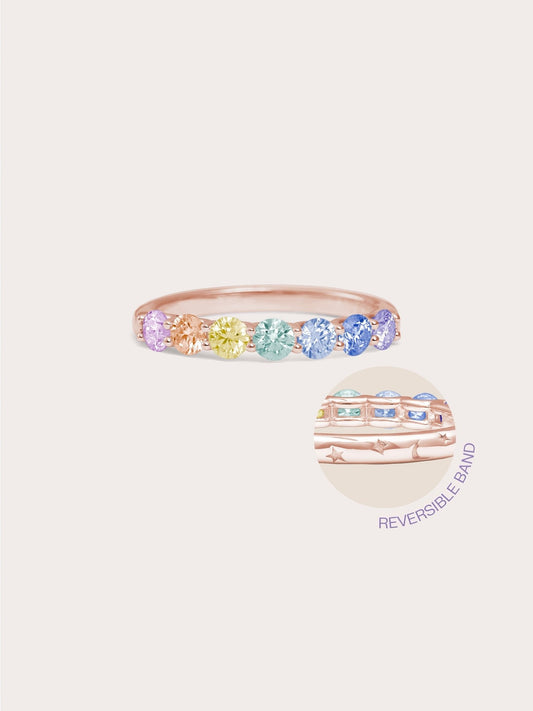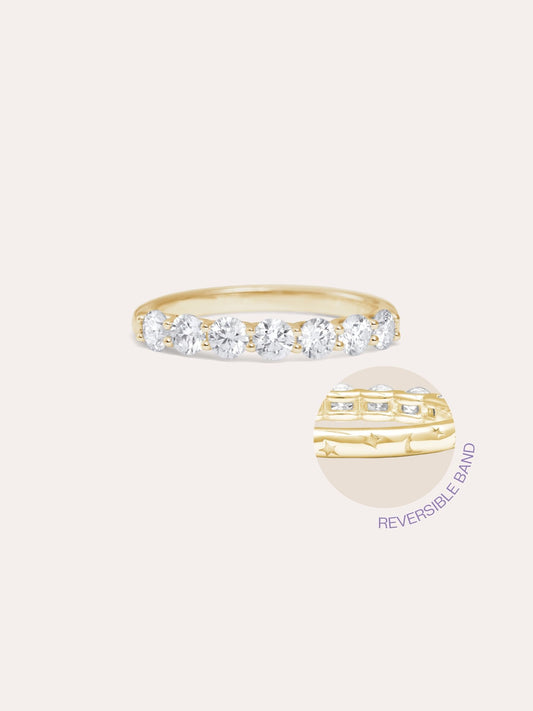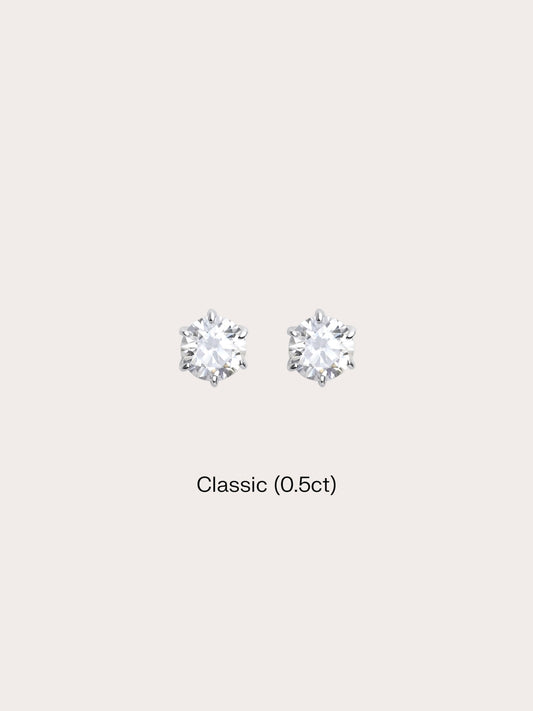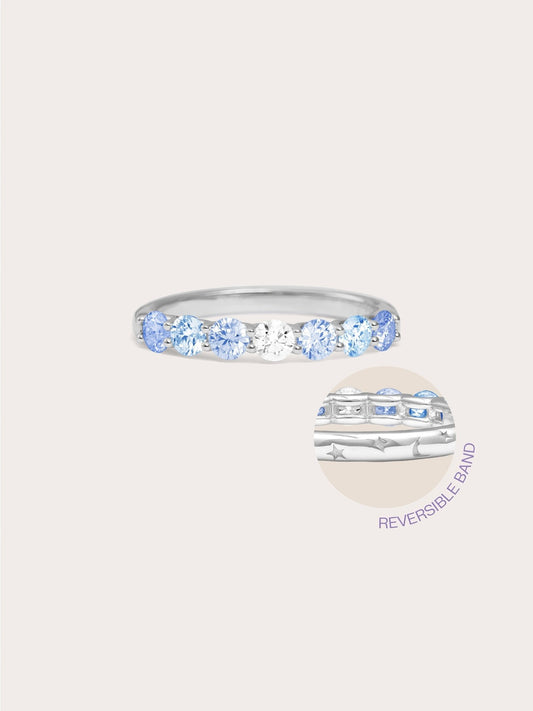Moissanite vs Diamond: Unveiling the Differences

For centuries, diamonds have been the classic symbol of enduring love, but moissanites have recently emerged as a captivating alternative, offering stunning brilliance and unique qualities. At first glance, both appear very much alike. However, a moissanite is not a diamond. If you're considering a piece of moissanite jewelry, you should first understand its distinct characteristics and how it fares in terms of wear and care.
 What is Moissanite?
What is Moissanite?
This dazzling gemstone was first discovered in a meteor crater by Nobel Prize-winning scientist Henri Moissan in 1893. A naturally occurring moissanite is extremely rare; moissanites used in jewelry today are mostly lab-created. Scientists have mastered the art of replicating its natural formation process in controlled environments.
Moissanite is composed of silicon carbide (SiC), a compound of silicon and carbon. This distinct atomic structure gives moissanite its exceptional light-handling qualities, allowing it to display a breathtaking brilliance and fire, unlike most gems.
 What is Diamond?
What is Diamond?
Diamonds are naturally occurring precious gemstones that form under the immense heat and pressure of the Earth's mantle. They require billions of years to be created and are then brought to the surface through volcanic activity. In recent years, however, lab-grown diamonds have emerged as a popular and appealing choice due to their affordability and sustainability.
A diamond's composition is pure carbon, arranged in a unique crystal lattice structure. This specific arrangement makes the diamond the hardest known natural mineral on Earth. Traditionally, diamonds have symbolized enduring love, commitment, and timeless beauty, making them a cornerstone of fine jewelry for generations.

 Understanding Differences: Moissanite vs Diamond
Understanding Differences: Moissanite vs Diamond
While both gems are undeniably beautiful, the difference between moissanite and diamond lies in their distinct properties and characteristics.
BRILLIANCE AND FIRE
When light hits a gemstone, it either reflects as brilliance (white light) or disperses into a rainbow of colors (fire). Diamonds typically have a refractive index of 2.42, which allows for a beautiful, intense white sparkle. Moissanite, with a higher refractive index of 2.65-2.69 and double refraction, often exhibits more "rainbow sparkle" or fire.
This means it bends light more effectively, splitting it into a vibrant kaleidoscope of hues. Diamonds, on the other hand, typically have a whiter, more intense brilliance. While both are incredibly brilliant, their unique light dispersion creates distinct visual effects that some prefer over the other.
HARDNESS AND DURABILITY
The hardness of moissanite is impressive, making it highly suitable for everyday wear. Diamonds stand at a perfect 10 on the Mohs hardness scale, making them the hardest known natural mineral and exceptionally durable for daily use.
Moissanite ranks at 9.25 on the Mohs scale and is the second hardest gemstone after diamond. This means it's extremely resistant to scratches, chips, and abrasions, ensuring your jewelry remains beautiful and intact through regular wear without getting cloudy. That's why both gems are excellent choices for jewelry that you plan to wear often.
PRICE AND VALUE
One of the most significant distinctions between these two gems is their price point. Moissanite is substantially more affordable than diamonds of comparable size and quality. This considerable cost difference allows jewelry lovers to enjoy larger or more intricate designs without the premium price tag associated with diamonds.
Moissanite, like diamonds, is graded based on the 4 Cs: Cut, Color, Clarity, and Carat (though moissanite is often measured by millimeters due to density differences). Color grades range from D (colorless) to Z (light yellow), and clarity ranges from Flawless (FL) down to Included (I), indicating the presence of inclusions (tiny internal or external characteristics).
For our jewelry, we use Colorless D / Clarity VVS1 moissanites. This means our moissanites are of the highest color grade, appear perfectly clear, and are nearly flawless, with "very, very slightly included" inclusions that are only visible under 10x magnification.
 Diamond or Moissanite: Which Should You Choose for Jewelry?
Diamond or Moissanite: Which Should You Choose for Jewelry?
The choice between diamond or moissanite ultimately depends on your personal priorities and preferences for your jewelry.
If you prioritize budget flexibility, maximum brilliance, and an ethical lab-created origin, moissanite is an outstanding choice. It offers the luxurious aesthetic of a diamond and excellent durability, allowing you to get a larger stone or more elaborate design for your investment. And if you travel often, it is also a good choice due to its durability.
If traditional symbolism, natural origin, and the classic investment value of a diamond are more important to you, then a diamond should be your pick. Both are stunning choices for any piece of jewelry, and either will bring lasting beauty.
Mondays Made: Your Source for Brilliant Moissanite Jewelry
At Mondays Made, we're dedicated to providing high-quality moissanite jewelry as a brilliant, ethical, and valuable choice for our customers. Our unique designs, crafted with carefully sourced moissanite, empower you to express your individual style.
Explore our collection of moissanite rings, moissanite earrings, and more to find the perfect piece for your collection.




